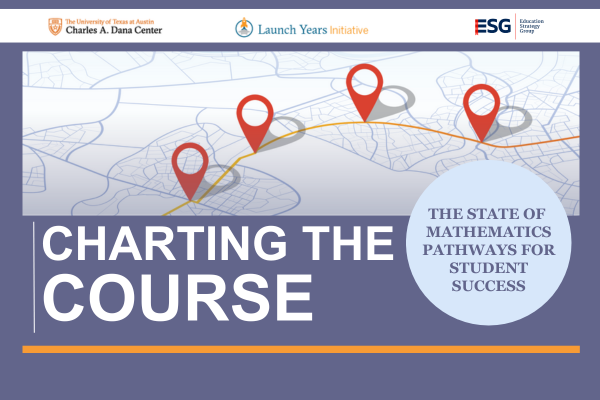Reimagining Math Education To Meet Tomorrow’s Workforce Needs

For decades, American mathematics education has included a fairly standard and predictable sequence of classes: algebra, geometry, pre-calculus, and maybe eventually calculus. The majority of students have not historically experienced much variation or choice in their math education, and for those who don’t go on to major in mathematics in college—which is the vast majority—many struggle to see the relevance.
In today’s economy, that rigidity may be to students’ detriment.
In-demand skills are shifting and evolving at an unprecedented pace. The rise of automation, artificial intelligence, and data-driven decision-making has reshaped what it means to be prepared for the modern workforce. In nearly every industry—from healthcare to logistics to public policy—data literacy, problem-solving, and quantitative reasoning are no longer optional; they’re essential.
Yet our education system is not providing all students with these career-aligned mathematics skills and options to navigate the world they are stepping into.
Keeping up with modern skill demands means evolving the way students experience math education. This means more than just strengthening instruction; it means reimagining the entire structure of the math pathways students experience from high school through college.
Today’s students need access to multiple, rigorous mathematics pathways that align with their academic and career goals. The traditional sequences that lead students through calculus still have value, particularly for STEM careers; and for many other students, courses like statistics or quantitative reasoning may be more relevant, more engaging, and more effective at building the skills the workforce demands.
This is why a growing movement is underway across the nation to modernize math pathways. A new report from ESG and the Charles A. Dana Center at The University of Texas at Austin finds that more than half of all states now offer high school math courses beyond the traditional Algebra I, Geometry, Algebra II sequence and have defined clear standards for these alternatives that align with the shifting workforce demands. Importantly, 31 states have also formed formal cross-sector partnerships to develop pathways that expand—not limit—students’ academic and career opportunities. These collaborations are essential for aligning expectations across K–12, higher education, and the workforce so that students can move forward smoothly and with momentum.
Despite this progress, however, significant work remains. The report finds that only 18 states expect four years of high school mathematics, even though research shows that students who take four years are better prepared for college-level math and career success. And just 10 states publicly report data on math course-taking patterns, making it nearly impossible to assess progress or identify gaps.
This lack of transparency and alignment hits students the hardest. Misaligned course sequences and unclear transfer policies can mean that students—especially those who transfer between institutions—end up repeating coursework or taking classes that don’t count toward their degree. The results can include delayed graduation, wasted tuition dollars, and students walking away from college altogether.
We can do better, and states should be the drivers of improvement.
Rigor without rigidity.
States who aim to modernize their approach to math should focus on maintaining high expectations while also providing more options for students to meet those expectations and be prepared for the modern workplace. This means enabling students to pursue the math domains that are aligned with their interests and career aspirations, whether that’s calculus, statistics, or quantitative reasoning.
One of the ways states can provide greater flexibility for students without sacrificing rigor is via their graduation requirements. In Arkansas, for example, students are expected to complete four credits of math before they graduate but the list of options has been expanded: Algebra I, Geometry, Algebra II or Quantitative Reasoning, and one Arkansas Department of Education-approved Mathematics or Computer Science Flex. This approach ensures that students get the mathematics foundation they need while maintaining choices.
Transparency of access and outcomes.
Without basic information about which math courses students are taking and how they’re doing in those courses, states cannot make effective policy decisions or improve outcomes. Without detailed course-taking data, schools risk overlooking systematic barriers that prevent certain student groups from accessing advanced coursework, particularly in historically underserved communities.
In addition to supporting informed policy moves, better data can also improve how information is shared with families about the pathway options available to students and where those opportunities could lead.
Hawai’i offers a noteworthy example of what a comprehensive “data story” could look like. The Hawai‘i Data eXchange Partnership (DXP), a partnership of multiple state agencies, illustrates the math journeys of Hawai‘i public school students as they move through high school and into the University of Hawai‘i system, including specific information on which courses students take and which patterns they follow. This type of information can empower students to make choices that align with their long-term goals. All data is broken down by student groups and in some cases reported over time to help tell a story about whether outcomes are improving over time.
Stronger connections between math and careers.
Making math more career-relevant for students will require tighter collaboration across K–12, higher education, and the workforce. That includes things like ensuring that the math courses offered in high school line up with those that are available in college—as Ohio has done—and establishing clear policies to make sure that college transfer students can keep their math credits and their momentum. It means ongoing engagement between education systems and employers to make sure that the math content students receive gives them the skills that businesses want.
State policy plays a pivotal role here. States can set clear expectations, align incentives, and provide resources to support tighter collaboration across K-12, higher education, and the business community—all in pursuit of broader state economic and talent goals.
Math should be a bridge to opportunity, not a barrier to success. Ensuring every student has access to the right math at the right time is foundational to their success—and to the strength of our economy.



